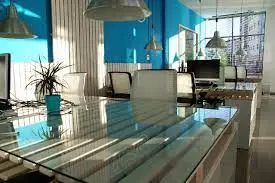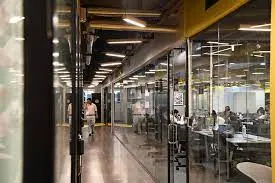Businesses continuously strive to balance individual focus with effective teamwork, sparking an ongoing debate between individual offices and open-plan workspaces. This article delves into the key aspects of individual offices, examining their advantages and disadvantages, optimal spatial proportions, and practical outfitting strategies. Multiple contemporary studies highlight how the physical work environment significantly influences employee job satisfaction and overall well-being, emphasizing the importance of thoughtful office design.
Recent research reveals that employees working in environments designed for privacy often experience increased job satisfaction and reduced stress levels compared to those in open-plan offices. This growing conversation reflects a deeper recognition of how workspace design shapes employee experiences and, in turn, impacts organizational performance. In this discussion, we unravel the complexities of implementing individual offices—from spatial planning to ergonomic furniture choices—to create efficient and comfortable work settings.
Difference Between Individual Office and Open Plan Office
Selecting the ideal office layout—whether individual offices or open-plan designs—is a strategic decision directly influencing company culture and employee satisfaction. A pivotal 2023 study from Harvard Business Review highlights key distinctions between these work environments. Notably, individual offices excel in offering enhanced privacy, which minimizes distractions and fosters improved concentration and job fulfillment.
While open-plan offices earn praise for promoting collaboration and communication, they also present challenges such as noise pollution and visual disruptions that can impair focus. Therefore, choosing between individual and open-plan layouts requires a nuanced understanding of employee preferences and the potential productivity trade-offs.
This decision extends beyond mere structural design, demanding thoughtful evaluation of workforce needs and their impact on overall performance and morale.
Designing An Individual Office
Optimally furnishing an individual office enhances both its functionality and aesthetic appeal. Consider the following crucial design tips to create a productive and comfortable workspace.
Ergonomic Furnishings
Prioritizing ergonomic furniture is vital for safeguarding employees’ health and boosting overall well-being. Adjustable desks, ergonomically designed chairs, and optimal lighting collaborate to create an environment that supports physical comfort while enhancing productivity. Employers investing in ergonomic solutions demonstrate their commitment to worker welfare and recognize the importance of sustained comfort throughout the workday.
By integrating ergonomic furniture, organizations can reduce musculoskeletal strain, improve posture, and maintain employees’ focus. This forward-thinking approach not only enhances workplace health but also fosters a culture of care, ultimately balancing productivity with employee satisfaction.
Personal Touch
Allowing employees to personalize their individual offices significantly boosts creativity and motivation. Simple additions such as cherished keepsakes, live plants, or inspiring artwork transform a workspace into a unique, inviting environment that fosters ownership.
Encouraging personalization cultivates a sense of belonging and can enhance emotional well-being. Items like photographs and sentimental objects serve as positive reminders of milestones and achievements while adding to the overall ambiance. A personalized workspace not only improves aesthetics but also nurtures an inspiring and supportive atmosphere that benefits both employees and organizations.
Proper Storage
Maintaining an organized office is crucial for fostering focus and efficiency. Utilizing strategic storage furniture such as filing cabinets and shelving units creates designated spaces that minimize clutter and optimize workspace use.
Filing cabinets offer practical solutions for categorizing documents, enabling quick access to vital information and streamlining daily workflows. Meanwhile, shelves maximize vertical space, accommodating books, office supplies, or decorative items without occupying valuable floor area.
Neatly arranged storage not only enhances the visual appeal of the office but also contributes to a more efficient and orderly work environment, enabling employees to focus on their tasks without unnecessary distractions.
Flexibility
Embedding flexibility into office design is essential to accommodate evolving work styles and team demands. Incorporate movable furniture and modular components that allow for easy reconfiguration of the workspace as needed.
Rather than fixed desk arrangements, flexible layouts permit seamless transitions between collaborative zones and private focus areas. This adaptability promotes an agile environment conducive to diverse work activities.
Modular furniture systems act as building blocks that can be rearranged to meet changing requirements, supporting dynamic workflows and varying team sizes. By prioritizing flexibility, organizations ensure their office spaces remain relevant, functional, and responsive to modern work challenges.
Conclusion
In the rapidly evolving field of office design, individual offices exemplify the balance between privacy and collaboration crucial to modern workspaces. By comprehending their benefits, limitations, and optimal design methodologies, organizations can create environments that enhance productivity, stimulate creativity, and promote employee well-being. Designing the ideal workspace is an ongoing process, yet embracing flexibility and intentional planning helps cultivate a thriving and satisfied workforce. For practical guidance on crafting effective individual offices, businesses can explore valuable insights from Office Interior Designers.
Additionally, if you want to learn more about 5 Reasons to Shop at a Modern Furniture Store, be sure to visit our dedicated Decoration category for comprehensive resources.
Investing in well-designed individual offices is not just about physical space but also about fostering a culture of respect, focus, and innovation. Modern employees increasingly value environments that cater to their need for privacy and personal comfort. Advanced technology integration—such as noise-canceling panels and smart lighting—further enhances these spaces, creating an optimal atmosphere for deep work. Companies recognizing these trends benefit from higher employee retention, improved mental health, and superior overall performance, making the strategic design of individual offices a critical component of future-ready workplaces.



